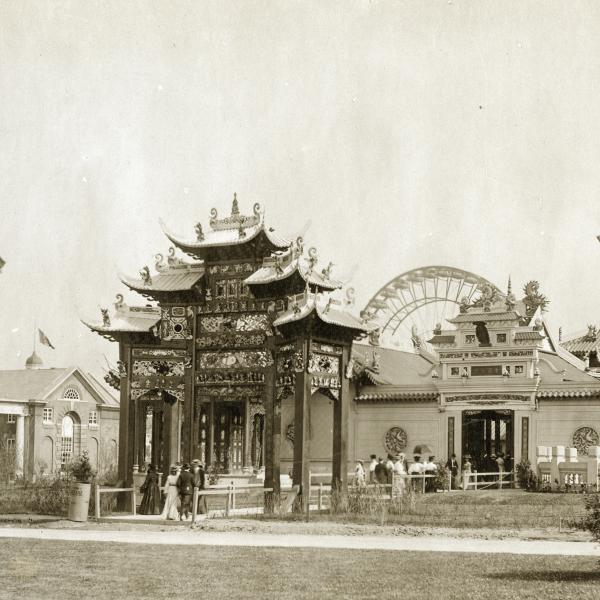Interview with Wilmetta Toliver-Diallo, Assistant Dean, College of Arts & Sciences; Senior Lecturer, African & African-American Studies; Founder, Washington University African Film Festival

After 16 years of organizing the Washington University African Film Festival, Wilmetta Toliver-Diallo still enjoys the intricate art of selecting films for its lineup. She considers a number of factors: how a film has fared at juried international festivals, what it offers to the debate about the African continent, whether it showcases a new genre or supports an up-and-coming filmmaker, how audiences in St. Louis will receive a film. Finally, there’s the challenge of ensuring a diverse representation of films from the continent’s 54 countries.
Toliver-Diallo’s deliberate approach has scored big with the festival-goers. Before the COVID-19 pandemic, as many as 1,000 people attended the weekend’s screenings. This year, the festival, which takes place March 25-27, kicks off with both in-person and online screenings, with eight films on the big screen in Brown Hall, Room 100 and online via Eventive. The selections hail from Chad/France, Ethiopia, Ghana, Nigeria, Senegal, South Africa, Sudan/Qatar and Tunisia, and include both short and feature-length films. Among them are films honored with awards from the Hamburg Film Festival, Venice Film Festival, Zanzibar International Film Festival and others. In addition, viewers of all ages can participate virtually in an animation workshop for youth with award-winning animator David Heredia.
Below, Toliver-Diallo tells us about the films in this year’s festival, including a couple of favorites she’s looking forward to sharing with St. Louis audiences, and the conversations on Africa and African film she hopes the festival inspires.
Tell us about this year’s lineup. Is there a theme or common thread?
When I first sought to get this year’s films together, I thought that I would have a lot of African futuristic films. Those films were creating a buzz at film festivals over the summer, and I was excited about having experimental offerings.
When the dust settled, however, the lineup is a bit more diverse than previously imagined. I do have Tang Jër, Selly Raby Kane’s film, and I was considering Neptune Frost, but when films snag certain distributors at the last minute, it ruffles the lineup. We have a strong lineup, including a couple of familiar filmmakers, like Mahamat-Saleh Haroun, whose work I have shown often at the festival, and some strong titles from Ethiopia and Tunisia. The Festival Panafricain du Cinéma de Ouagadougou (FESPACO) was pushed to October 2021 this year because of COVID (originally scheduled for February 2021), and we were able to follow that festival and its award ceremony closely. I am also really excited about the strong animation titles in Saturday’s screenings.

Is there a particular film you are really excited about seeing and sharing with others in this year’s lineup?
For me, there is never just one. I love the combination of Saturday evening’s screenings (Al-Sit and Lingui) because they both emphasize the role of choice/agency — whether it is untangling a web of expectations, traditions, economic stability involved in marriage, not making assumptions about sisterhood, the ways in which people make choices about their bodies.
I really like Un Fils because the acting is just phenomenal. And I am always excited about our animated films [Lady Buckit and the Motley Mopsters and Begho] because it is a genre to watch on the continent and so important to support.
I am also really excited to host David Heredia, who will lead a virtual animation workshop on Saturday morning.
How has the St. Louis community received this film festival over the years?
St. Louis has been very supportive of the festival. Initially, I was quite nervous about the reception but it has been great to get to know film festival-goers over the years, as we often have those who come every year they are able. They have created a community. People love the opportunity to view films that they might never get a chance to see otherwise. So, it is incredible. We also have had filmmakers come and talk about their films, which has really excited the audience.
Film is such an important way for people to learn about the lives of others. Narrative film is particularly compelling without being didactic, offering a window into other ways of seeing the world. You learn so much through language, movement, landscape… It is important for St. Louis to be a part of those conversations.
Headline image: Still from Tang Jër (Selly Raby Kane, Senegal, 2020, 14m, Wolof with English or French subtitles)





